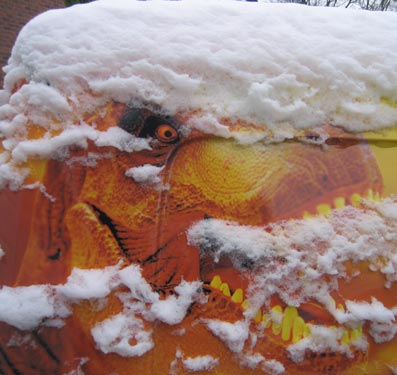Chilly Dinosaurs – New Research from Northern Russia indicates Dinosaurs did not mind the Cold
Dinosaurs more Robust then Scientists Previously Thought – Adapted to the Cold
It is partly thanks to the palaeontologists that have worked at the Dinosaur Cove site in Victoria, Australia that we have an appreciation of the adaptability of dinosaurs to harsh environments. Evidence from Cretaceous sediments has shown that Antarctica, was not always a frozen wasteland but once had dense conifer forests and marshes that teemed with life. Scientists believe that many animals were seasonal migrants – herds of plant-eaters migrating with the seasons to take advantage of the long daylight hours in the short Summer. Following close behind would be the carnivores. However, dinosaurs like the little ornithopod Leaellynasaura are believed to have been permanent residents.
Polar Dinosaurs
During this time in the Cretaceous, approximately 106 million years ago, the lands that were to become New Zealand, Australia and Antarctica were fused into a super continent. The climate was much warmer then, but as the sun dropped below the horizon the residents would have had to endure long periods of total darkness and temperatures below freezing.
Now a team of scientists studying fossils from the very end of the Age of Reptiles have uncovered evidence of thriving dinosaurs in the far north, just 1,000 miles from the North Pole. Working with fossils dating back to between 68 and 65 million years ago (Maastrichtian faunal stage), the researchers from the Royal Belgian Institute of Natural Sciences have uncovered evidence of hadrosaurs, nodosaurids as well as meat-eaters such as tyrannosaurids and smaller dromaeosaurs in northeastern Russia. Work has been going on in Alaska studying hadrosaur fossils (duck-billed dinosaurs), but scientists assumed that these dinosaurs migrated into the area to take advantage of the 24-hour daylight in the short northern hemisphere Summer that would have allowed lush plant growth. The Belgian team have discovered fragments of dinosaur egg shell, indicating that at least some species bred at high latitudes. Whether or not the nesting sites were created by permanent residents or by migrating dinosaurs is unclear. No fossil evidence for crocodiles, turtles and lizards have been found in the Russian site to date. Does this mean that this northern region was just to cold for these cold-blooded reptiles to survive?
Studying Fossil Pollen and Plant Material
By studying fossil pollen and plant material the team working on the exposed Upper Cretaceous strata of north-eastern Russia have concluded that the average annual temperature was approximately 10 degrees Celsius.
Commenting on the research, recently published in the German scientific journal “Naturwissenschaften“, the leader of the expedition Professor Pascal Godefroit stated:
“For the first time we have firm evidence that these polar dinosaurs were able to reproduce and live in those relatively cold regions. There is no way of knowing for sure, but dinosaurs were probably warm blooded just like modern birds, which are the direct descendants of dinosaurs”.
Professor Godefroit added:
“We have no remains of cold-blooded reptiles such as turtles, crocodilians and lizards in that area which suggests it was too cold for them. The dinosaurs were incredibly diverse in polar regions – as diverse as they were in tropical regions. It was a big surprise for us”.
The Belgian’s work could have a big impact (no pun intended), on Mesozoic extinction theories. It seems that certain types of dinosaur may have been more tolerant to harsh, cold climates than previously thought. If sudden and dramatic climate change is put forward as a theory for the demise of the dinosaurs, then why could this be so? The fossil record indicates that some dinosaurs could migrate to cooler environments in search of food and indeed, some may have actually adapted to the cold conditions and actually thrived.
Did Dinosaurs Thrive in the Snow?
Picture credit: Everything Dinosaur
Visit Everything Dinosaur’s award-winning website: Everything Dinosaur.


